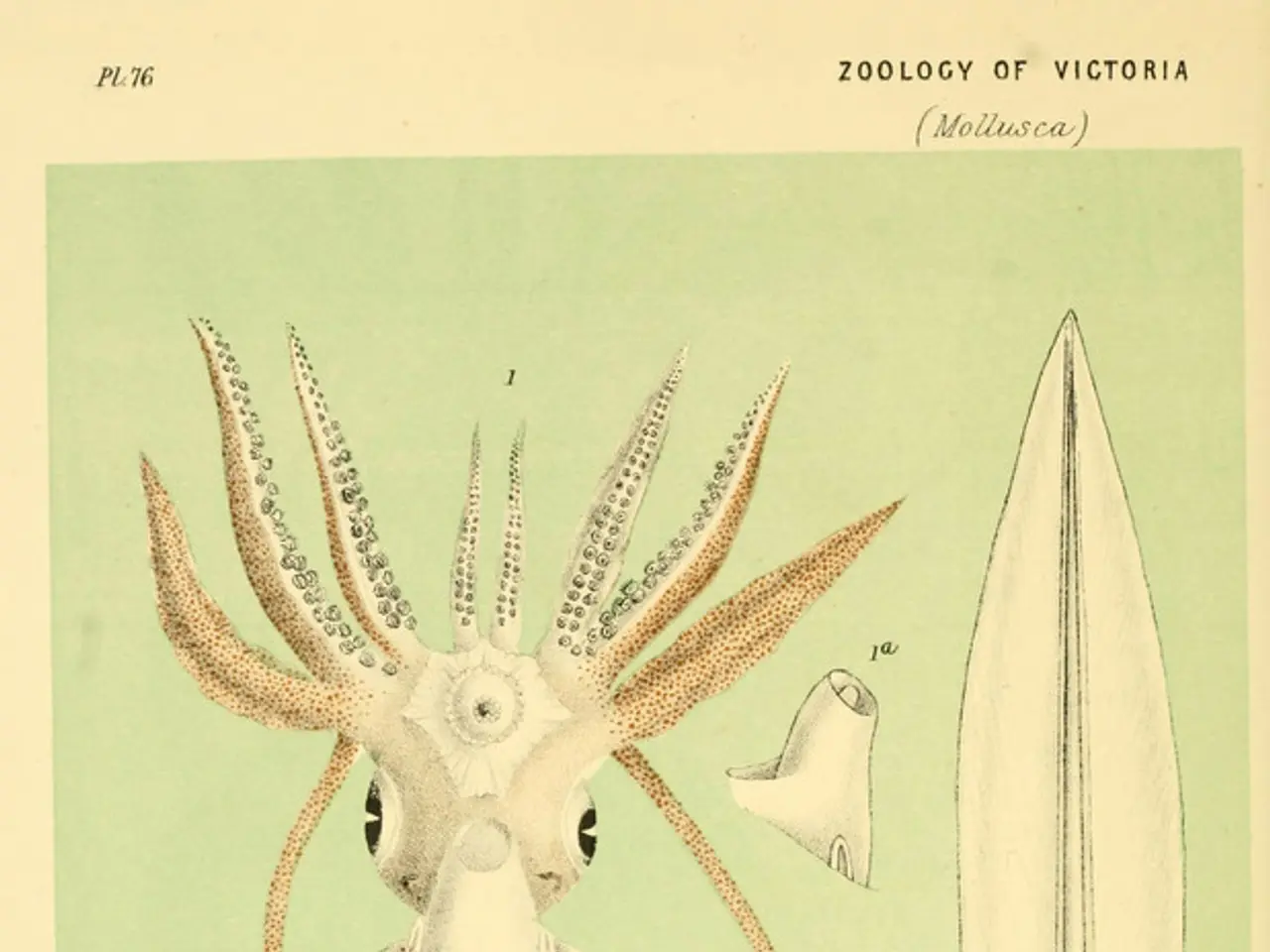Giant squid captured on film in its natural environment for the first time
In a groundbreaking discovery, the U.S.-based Schmidt Ocean Institute's research vessel, Falkor, filmed a colossal squid alive in its natural oceanic environment on March 9, 2021. This elusive creature, known as the world's largest squid species, was first identified a century ago from remains found in a sperm whale's stomach.
The underwater robotic explorer SuBastian, controlled by the Falkor, captured the stunning footage of the teenage colossal squid at a depth of 2,000 feet. The squid, estimated to be roughly the size of a foot long, was smaller than expected for this species, suggesting it might be a juvenile rather than a fully grown adult.
Younger colossal squids are known to inhabit shallower depths, while older ones probably descend into the abyss as they grow rapidly. This particular sighting took place near the South Sandwich Islands in the cold waters of the southern Atlantic.
The colossal squid, often referred to as a 'glass squid', belongs to the family Cranchiidae. It is unique for its large eyes, the largest on the planet, allowing it to spot whale-sized predators from a considerable distance. It also has a unique set of tentacles with sucker-covered arms and large immobile hooks midway along their length.
Interestingly, the colossal squid possesses chromatophores, which allow it to switch between being transparent and opaque. This remarkable ability could be a survival strategy, helping the squid blend into its surroundings and evade predators.
While the colossal squid is not an apex predator, it is preyed upon by various marine creatures such as elephant seals, penguins, fishes, sperm whales, and sleeper sharks.
Footage of a living colossal squid briefly caught on a fishing line emerged in 2005 from a boat in the southern Atlantic Ocean waters. However, this was the first time a colossal squid was filmed alive in such detail, thanks to the advanced technology on board the Falkor.
In 1981, a nearly 17-foot colossal squid was inadvertently caught by the Soviet trawler Eureka. The first recorded sighting of a living colossal squid occurred off New Zealand's south coast in 2003, where a dead specimen measuring 20 feet long was found floating.
Remarkably, another rare marine creature, the glacial glass squid, was also filmed during a separate mission by SuBastian. This occurred on a newly exposed, glacier-free patch of the Antarctic Peninsula's seafloor.
The colossal squid was formally identified as a new species in 1925 at London's British Museum. With each new sighting and discovery, our understanding of these fascinating creatures continues to grow. The research expeditions led by the Schmidt Ocean Institute are invaluable in furthering our knowledge of the deep sea and its inhabitants.
Read also:
- Peptide YY (PYY): Exploring its Role in Appetite Suppression, Intestinal Health, and Cognitive Links
- Toddler Health: Rotavirus Signs, Origins, and Potential Complications
- Digestive issues and heart discomfort: Root causes and associated health conditions
- House Infernos: Deadly Hazards Surpassing the Flames








